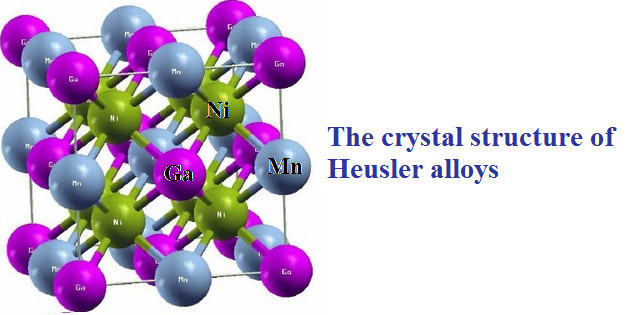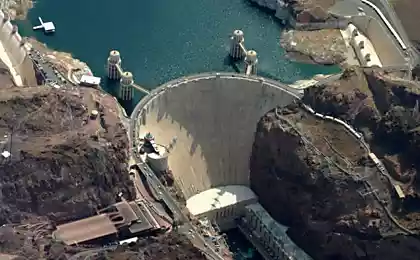438
A breakthrough in materials for spintronics
Researchers at the University of Mainz was the first to directly observe the 100 percent spin polarization of Heusler compounds.
The authors called his work a breakthrough that physicists and chemists around the world have long anticipated and predicted that she will play a key role in the field of information technology in the coming years. This approval is valid because the results of the experiment provide the Foundation for future development of high performance spintronics devices using Heusler materials. These materials may find application, for example, in reading heads of hard disks and of nonvolatile elements storing information ultra-small size, providing a very high recording density.

Traditional electronics are based on the transfer of an electrons charge. But these elementary particles possess another interesting property – spin. Spin is a own moment of momentum of a particle. Although the explanation of the essence of the back often talk about it as a result of the rotation of the particles, to explain it based on mechanics is impossible. This is a purely quantum phenomenon. For us it is important to know what the electron spin is in the direction of the spin polarization and the spin generates a magnetic moment – magnetic field of the particle. The latter allows you to control the direction of the spin using a magnetic field.
The possibility of using the phenomena associated with the spin of the electrons, since the 1980s years of experience in spintronics (spin electronics). It is based on the open in 1988, the phenomenon of giant magnetoresistance (GMR), for which in 2007 was awarded the Nobel prize. HMS is that the resistance of three-layer metal sandwich of two ferromagnets, which is located between nanoclay non-magnetic metal (e.g., iron-chromium-iron), strongly depends on the orientation of electron spins in the ferromagnetic layers. If spins are parallel, non-magnetic material (chrome) passes the current, if antiparallel, the resistance increases dramatically. A similar situation occurs if instead of a conductor of the middle layer manufactured of the dielectric. There is dependent on spin current will be associated with the tunneling effect, and a corresponding increase in resistance has called tunneling magnetic resistance (TMR). Thus, the structure with the GMR are the valves that are easily controlled by the magnetic field, and can be used in the creation of various digital devices. This technology promises many advantages such as miniaturization, increase of performance and the efficiency of devices, which, moreover, almost never generates heat. However, its implementation must have a suitable ferromagnetic material working at room temperature. The main requirement to them – much as possible the polarization of the electrons, i.e. to electrons having spin oriented in a given direction. It is finding the right materials employed physicists and chemists in the last two decades.
Among the main candidates for this role – the so-called Heusler alloys (they are also called Heusler compounds, from the English. compound connection). An alloy of Heusler is a compound of three metals with the chemical formula X2YZ, for example, Co2MnSi. It is interesting that such a substance may have properties different from the properties of its constituent elements. Thus, the connection of three non-magnetic materials may be ferromagnetic. The Heusler materials have been studied intensively worldwide, especially in Japan, Germany and the USA. At the German University Johannes Gutenberg (JGU) of Mainz, they are the main subject of research.
Physics of JGU proved that the Heusler alloy Co2MnSi has the required electronic properties, and could for the first time to carry out the experimental proof of its nearly full spin polarization at room temperature. "This class of materials has long been studied, and there is a significant theoretical development for the required electronic properties of Heusler compounds but no single experiment has not previously been able to confirm 100 percent spin polarization at room temperature," explained the main author of the study Martin Jordan from JGU. Encouraging results were previously obtained at very low temperatures (-269 degrees Celsius).
This project was carried out in collaboration with theorists from the University of Munich Ludwig-Maximilians (LMU) and the max Planck Institute chemical physics of solids (MPI-CPfS) in Dresden. The results were recently published in the scientific online journal Nature Communications (M. Jourdan et al. Direct observation of half-metallicity in the Heusler compound Co2MnSi. Nature Communications, 2014; 5 DOI: 10.1038/ncomms4974.)
"This is not just a breakthrough in the search for new materials, spintronics, but also in the interaction between theory and experiment," said Jordan. "We were able to show that perfectly prepared materials actually have the properties that were theoretically predicted".
Successful experiments were based on training samples with maximum accuracy, ensuring the absence of damage in the crystal structure of Heusler compounds. The sample was a thin film is created in ultrahigh vacuum by a specially developed technology at JGU. Spin polarization has been measured using photoelectron spectroscopy, the results of which were explained in collaboration with the theoreticians of the LMU and the MPI - CPfS as a result of a special combination of bulk and surface properties of the connection. According to the materials of the University of Mainz
Source: nkj.ru
The relationship of cancer and the emotional sphere of the person
Scientists have discovered a "split" personality of plain water






















